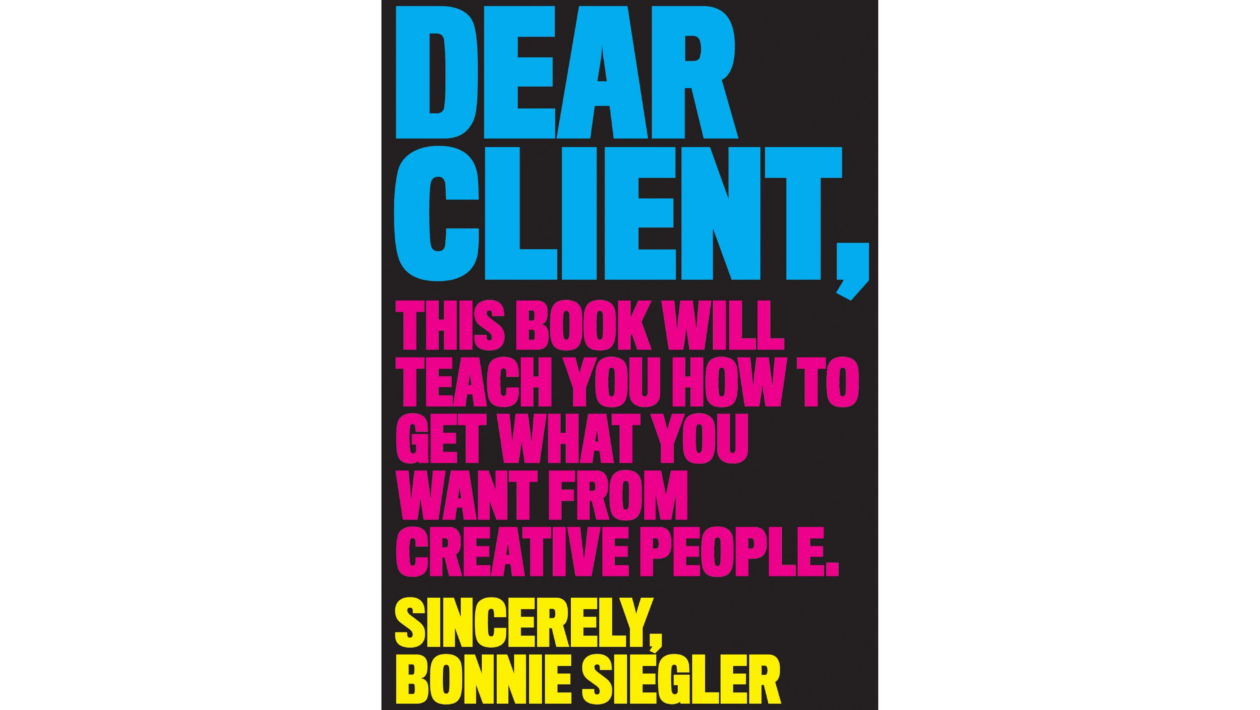By Bonnie Siegler
New York, NY: Artisan Books (2018)
Kindle edition
Reviewed by LARRY BAILEY
As a pastor, I’m always interested in new materials and methods that can enhance the communication and creativity between clergy and laity. On both sides, there have always been certain expectations. When I first came upon this book title, Dear Client: This Book Will Teach You How to Get What You Want from Creative People, I was immediately captivated. I reasoned that there were many creative individuals in my two congregations. Here’s a book, I thought, that will help me to get more productivity out of reluctant church members. However, Siegler, a graphic designer, writes to the contrary.
I assessed that Dear Client can significantly aid in communications between congregants and church leaders. From my perspective as a pastor, I read the book as if it was entitled Dear Member: How to Get Greater Creativity from Your Pastor and Other Church Leaders. In essence, Dear Client is more about how to draw out greater creativity from the entity hired than from the entity doing the hiring. Her argument, as a professional designer, is that once clients have communicated their wants to the hired professional designer, they should not thereafter try to do the work of the professional designer; the art of creativity should be left to the designer. With this recommendation, however, in terms of church operations, I feel that some caution should be exercised. Some church leaders, given their propensities, can take this notion of “exclusive creativity” to a level bordering on autocracy.
In her introduction, Siegler compares two types of clients, which I have found also exist in the local church. She notes that:
Whenever designers get together, we complain about difficult clients. We’ve all had them. Relationships that began with optimism and promise descended into bad feelings. Egos and insecurities are powerful negative forces. Some clients who want to appear smart confuse asking questions with appearing stupid. Or they think they should already know the answers. Others believe that since we work for them, we’re simply obligated to just do what they want even when we think it is wrong.
(loc. 154)
That attitude indeed reminds me of ministry.
Whereas I chose this book because I was initially thinking in terms of how to get more creative results from clients, which in the church setting would be represented by “creative members,” Siegler’s book was written to achieve the exact opposite results. She suggests less creativity from the client to not interfere with the professional creativity of the designer, who has been hired to come up with fresh new concepts and winning designs.
She writes, “Ironically, there are many books for designers about how we can better work with clients, which are useful. Most of us want to understand you, so we can improve the process. But, as far as I know, there are no books to help clients better work with creative people, who are a unique species with a unique language and not-so-unique insecurities” (loc. 180). As a successful graphic designer, she describes in 66 lessons how better communications between designers and their clients can render more positive working relationships and results.
Of her fellow tradesmen, she states:
Creatives are more often than not sensitive souls, a quality that helps us create great work. But this quality also means that we work better with people who are trusting and positive. Although most creative work is about problem-solving, it’s also about the human connection between us and the client.
(loc. 206)
This is especially true in terms of clergy and laity. Of the 66 lessons given, all of which are very good, the ones most meaningful to me in terms of church operations were, “Be Honest,” “Have Clarity of Purpose,” “Decide Who Will Decide,” “Be Open to Things You Didn’t Imagine,” “Be Confident, Not Arrogant,” and “The Power of Encouragement.” I will share insights on only a few of those I have mentioned here.
- Honesty: “Be honest about everything because, truth be told, that’s the surest way to get the best work. And the alternative is just a waste of time, energy, and trust” (loc. 234).
- Clarity: “A clear understanding of your primary business objective is crucial” (loc. 273). This is good advice not only for the business community but works equally well in the church.
- Arrogance: “Confidence is a beautiful thing. It’s based on reality– you know who you are, what you’re doing, and, most important, what you don’t know. Someone who is confident brings out the best in everyone. When you get praise from a confident person, you work harder to get that praise again. When you are criticized by a confident person, you take it seriously because you know they only do so with good reason. Arrogance, on the other hand, rarely gets you what you want from a creative. It’s based on insecurity or fear, both terrible drivers. You (subconsciously?) need to put other people down to give the impression that you, in fact, know everything and everyone else is inferior to you. It never works” (loc. 1105).
- Encouragement: “The power of encouragement can’t be overstated. Creative brains thrive on psychic payments, so I recommend you heed this advice in good times and bad” (loc. 1133).
I highly recommend reading this book. There were certain troubling chapter titles and an occasional word that violated my principles of “whatsoever things are lovely,” but on the whole, the counsel given was well received. With the changing of church dynamics today, as laity is becoming more vocal and determined in their expectations of church leaders, both entities must revisit and clarify what those expectations are, especially as we think in terms of organizational structure and future sessions.
LARRY BAILEY is currently the pastor of the Triana and Alpha Seventh-day Adventist Churches, located respectively in Madison and Decatur, Alabama.

